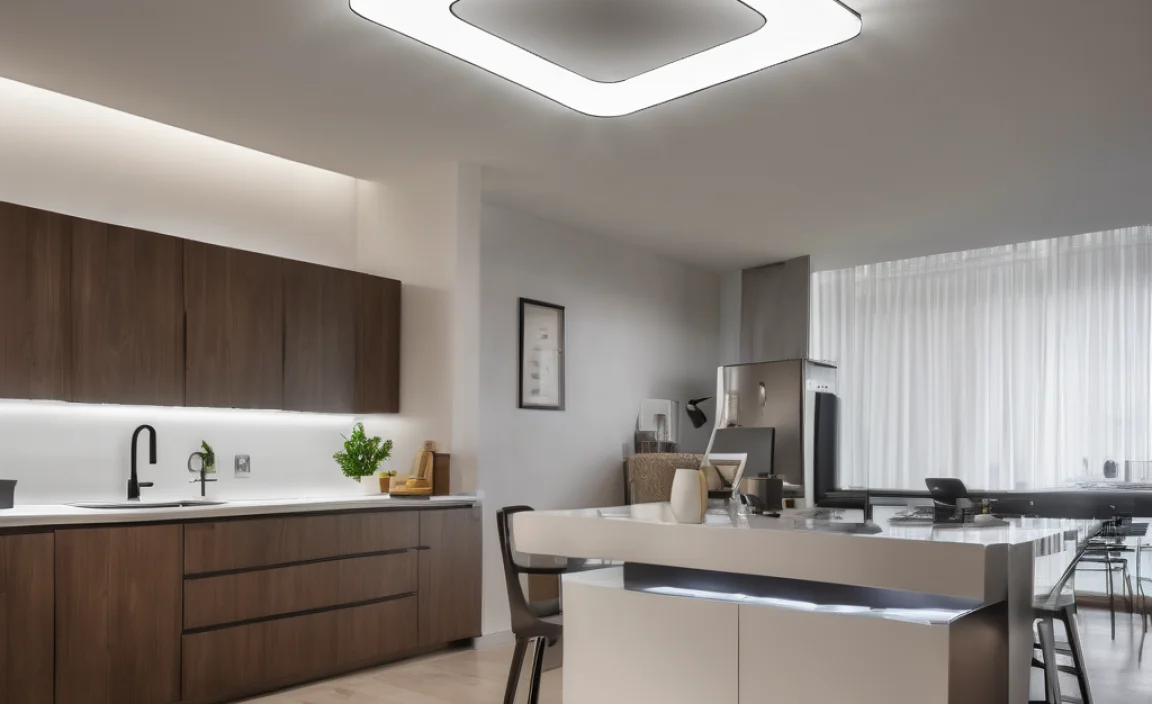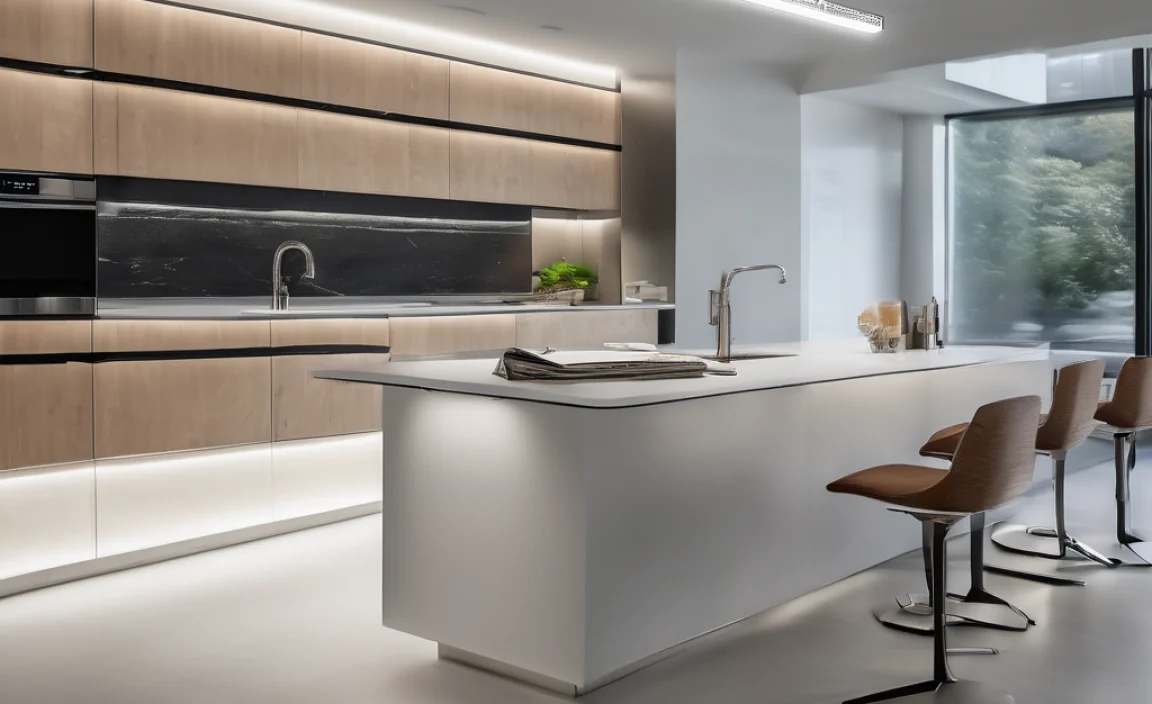GLA-Class LED headlights are a significant upgrade for visibility and style, offering improved brightness and lifespan. Learn the key specs and explore smart ways to enhance your GLA’s lighting for safer, more confident driving.
Are you squinting on those nighttime drives? Do your GLA-Class headlights seem a bit dim, making you worry about seeing every pothole or pedestrian? You’re not alone! Many GLA owners wonder about their lighting system, especially as newer LED technology becomes the standard. Upgrading to LED lighting not only makes your car look sleeker but, more importantly, makes driving safer by illuminating the road better. Don’t stress about fancy tech jargon; we’ll break down what you need to know about GLA-Class LED lighting, from understanding the basics to exploring some brilliant upgrades that are easier than you might think. Let’s shine a light on your GLA’s illumination!
Understanding GLA-Class LED Lighting: The Basics

Mercedes-Benz GLA models, depending on the year and trim, come equipped with different lighting technologies. While older models might have halogen bulbs, newer ones, especially from around 2015 onwards, have increasingly adopted full LED technology for headlights, taillights, and even interior cabin lights. LED stands for Light Emitting Diode, and they’re a game-changer compared to traditional incandescent or halogen bulbs.
Think of LEDs as small, solid-state devices that produce light when electricity passes through them. They are incredibly efficient, long-lasting, and can produce a brighter, more natural-looking light. This means better visibility for you on the road and a more modern aesthetic for your GLA.
Key Specifications to Know
When talking about car lighting, several specifications are important. For GLA-Class LED lighting, these usually revolve around brightness, color temperature, power consumption, and lifespan. Understanding these helps you appreciate the technology and make informed decisions about upgrades or replacements.
- Lumens (lm): This measures the total amount of visible light emitted by a source. Higher lumens mean a brighter light. For headlights, you’ll typically see ranges from 800 to 2,000 lumens per bulb, with LEDs generally offering higher lumen output than halogens at similar power draws.
- Color Temperature (Kelvin, K): This describes the color of the light. Lower Kelvin numbers (around 2700K) produce a warmer, yellowish light, like incandescent bulbs. Higher numbers (5000K-6500K) produce a cooler, whiter, or even slightly blueish light, which is closer to natural daylight. Most modern LED headlights aim for a color temperature between 4000K and 6000K for optimal visibility and reduced eye strain.
- Wattage (W): While often associated with brightness, wattage actually measures power consumption. LEDs are much more efficient, meaning they use less wattage to produce the same or more light than traditional bulbs. For example, a 25W LED bulb might produce as much light as a 55W halogen bulb.
- Lifespan: LEDs have a significantly longer lifespan than other types of bulbs. While a halogen bulb might last 1,000-2,000 hours, LEDs can last 25,000 to 50,000 hours or even more. This means you’re unlikely to ever need to replace your LED headlights.
- Beam Pattern: This is crucial for safety. Headlight beams are designed to illuminate the road ahead without dazzling oncoming drivers. Proper beam patterns (e.g., clear cut-off lines for low beams) are essential and governed by regulations.
For your GLA-Class, Mercedes-Benz specifies the exact OEM LED lighting components for optimal performance and compliance with safety standards. Trying to match these specifications is key if you’re looking for replacements or compatible upgrades.
GLA-Class LED Headlight Types Explained

Mercedes-Benz offers different LED headlight packages for the GLA-Class, varying by model year and optional equipment. Understanding these can help you identify what you currently have and what you might be able to upgrade to.
Standard Halogen vs. LED Headlights
Many entry-level or older GLA models might have come with standard halogen headlights. Halogen bulbs are essentially the same technology used for decades – a tungsten filament enclosed in a glass bulb filled with halogen gas. They get very hot to produce light and have a yellowish hue.
LED headlights, on the other hand, offer a host of advantages:
- Brighter Illumination: LEDs provide a much brighter and more intense light, significantly improving visibility at night and in poor weather conditions.
- Whiter Light: The cooler color temperature of LEDs is closer to natural daylight, which many drivers find less fatiguing and easier on the eyes. It also improves color perception of road signs and markings.
- Instant On/Off: Unlike halogens that take a moment to reach full brightness, LEDs illuminate instantly at full power.
- Energy Efficiency: LEDs consume less power, which can contribute to slightly better fuel economy and reduces strain on the vehicle’s electrical system.
- Longevity: As mentioned, LEDs last much longer, meaning you’ll rarely (if ever) need to replace them.
- Compact Design: LEDs are smaller, allowing for more modern and aerodynamic headlight housing designs.
You can usually tell if your GLA has LED headlights by their appearance when off: they often look like clear lenses with distinct projector-style housings or multiple LED elements, rather than a single bulb behind a reflector.
Full LED Headlights vs. Bi-LED
Within LED technology, you might encounter terms like “Full LED” or “Bi-LED.”
- Full LED: This generally means that all lighting functions for the headlight unit (low beam, high beam, DRLs, turn signals) use LED technology. Each function might have its own dedicated LED chip or module.
- Bi-LED: This is a specific type of LED headlight where a single projector or LED module is used for both the low beam and the high beam. A mechanical shutter or a change in the light’s intensity or pattern activates the high beam function. This design is very common in modern luxury vehicles like the GLA-Class for its efficiency and compact design.
Mercedes-Benz often uses adaptive lighting systems with their LED headlights. These systems can automatically adjust the beam pattern based on steering input and speed, further enhancing visibility and safety. If your GLA has “Active LED Intelligent Light System” or similar, it has these advanced features.
Essential Specs for GLA-Class LED Headlights

When looking at specifications for your GLA-Class LED headlights, you’re often looking for parts that match the original equipment manufacturer (OEM) standards. Here’s what you might find or strive for:
OEM Specifications Table
This table provides a general idea of what to expect. Actual specifications can vary slightly by model year and specific headlight package.
| Specification | Typical Value/Range for GLA-Class LED Headlights | Importance |
|---|---|---|
| Low Beam Output | Approx. 900-1200 Lumens | Ensures adequate road illumination for safe driving. |
| High Beam Output | Approx. 1500-2000 Lumens | Provides extended visibility for faster driving or open roads. |
| Color Temperature | 4000K – 5500K (Cool White) | Offers a balance of natural daylight appearance and road visibility. |
| Power Consumption (Low Beam) | Approx. 20W – 30W per bulb | Energy efficiency, reducing load on the electrical system. |
| Power Consumption (High Beam) | Approx. 30W – 45W per bulb | Higher power draw for increased brightness when needed. |
| Lifespan | 25,000+ hours | Virtually maintenance-free for the life of the vehicle. |
| Operating Voltage | 12V DC | Standard automotive voltage. |
Note: These are approximate values. Always refer to your vehicle’s owner’s manual or consult a Mercedes-Benz specialist for exact specifications for your specific GLA model. The SAE (Society of Automotive Engineers) sets standards for automotive lighting performance and durability, which are critical for safe operation.
Understanding OEM Part Numbers
Every genuine Mercedes-Benz part has a unique part number. If you need to replace a damaged headlight assembly or a specific LED module, finding the correct OEM part number is crucial. You can usually find this number printed directly on the part itself (often on a sticker or molded into the plastic) or by looking it up through Mercedes-Benz dealership parts catalogs using your VIN (Vehicle Identification Number).
Using the correct part number ensures:
- Perfect fit and integration with your GLA’s electrical system.
- Compliance with all safety and regulatory standards.
- The expected performance and lifespan of the lighting component.
Genius Upgrades for Your GLA-Class Lighting

While your GLA-Class’s factory LED lighting is excellent, there are ways to enhance it, whether you’re looking for better performance, added functionality, or a more custom look. Always prioritize safety and legal compliance when considering upgrades.
1. Upgrading to Advanced Full LED Headlights (From Halogen or Older LEDs)
If your GLA-Class originally came with halogen headlights, upgrading to a full LED headlight assembly is the most significant improvement you can make. Many aftermarket options are designed to be plug-and-play, meaning they fit directly into your existing headlight housing and require minimal wiring modifications.
Pros:
- Drastically improved visibility (brighter, whiter light).
- Modern, updated aesthetic for the front of your GLA.
- Increased safety and reduced driver fatigue.
- Longer lifespan than halogen bulbs.
Cons:
- Can be the most expensive upgrade, often requiring a full headlight unit replacement.
- Ensure the product is DOT-approved and meets local road regulations.
- Some aftermarket units might have compatibility issues or less precise beam patterns.
DIY Difficulty: Medium to Hard. Requires removing the front bumper and headlight assemblies. If you’re not comfortable with this, it’s best left to a professional.
2. Adding Auxiliary LED Lighting (Under Specific Circumstances)
While not typically installed on the GLA for daily road use, some owners might consider auxiliary LED lights for specific off-road or utility purposes. However, for standard road driving, this is generally not recommended or legal. If you’re using your GLA for something like overland adventures, specific driving light setups might be considered. Always check local laws regarding auxiliary lighting.
3. Upgrading Interior LED Lighting
This is a much simpler and often more affordable upgrade that can significantly enhance your driving experience. Many GLA models have interior lighting that can be upgraded from standard filament bulbs or older LEDs to newer, brighter, and more energy-efficient LEDs.
Common Interior LED Upgrade Areas:
- Dome Lights: For better cabin illumination when getting in and out.
- Footwell Lights: To help find dropped items.
- Door Puddle Lights: For a welcoming glow when opening doors.
- Vanity Mirror Lights: For clearer illumination.
- Trunk/Cargo Lights: To better see your belongings.
Pros:
- Instant improvement in cabin ambiance and utility.
- Very affordable and readily available kits.
- Extremely easy to install (usually plug-and-play bulb replacements).
- Low power consumption preserves battery life.
Cons:
- Make sure to buy CAN-bus compatible LEDs to avoid error messages on the dashboard.
- Ensure you choose the correct bulb type (e.g., T10, C5W festoon) for each location.
DIY Difficulty: Easy. Typically requires just unscrewing a lens cover and swapping bulbs.
4. Enhancing Daytime Running Lights (DRLs)
Many modern GLA models come with stylish LED DRLs. If yours doesn’t, or they’re not as bright as you’d like, consider upgrading. Some kits offer sequential turn signals or custom designs.
Considerations:
- Brightness: DRLs should be visible but not blinding.
- Color: Typically a bright white light, similar to headlights.
- Legal Compliance: DRLs have specific regulations regarding intensity and placement.
- Integration: Ensure they integrate seamlessly with your GLA’s electrical system and turn on/off correctly with ignition and headlights.
DIY Difficulty: Medium. May involve wiring into your car’s electrical system, so professional installation is often recommended if you’re not experienced with automotive electricals. You can learn more about automotive wiring best practices from resources like Blue Sea Systems, a reputable name in marine electrical systems, which often share similar robust principles.
Installation Considerations & Safety Tips

When undertaking any lighting upgrade, safety and proper installation are paramount. Mercedes-Benz vehicles have complex electrical systems, and incorrect modifications can lead to issues, warning lights, or even damage.
Tools You Might Need (for Headlight Replacement)
- Socket wrench set (metric)
- Screwdriver set (Phillips and flathead)
- Trim removal tools (plastic pry tools to avoid scratching)
- Torque wrench (for reassembling bumper and mounting points)
- Gloves and safety glasses
- Work light or headlamp
Step-by-Step Guide: Replacing Interior LED Bulbs (Simple Upgrade)
- Identify the bulb type: Check your owner’s manual or remove the existing bulb to see its shape and markings (e.g., T10, C5W).
- Purchase LED replacements: Opt for CAN-bus error-free LEDs to prevent dashboard warnings.
- Park in a safe area: Ensure the car is off, on a level surface, and the parking brake is engaged.
- Access the bulb: Most interior lights are behind a plastic lens. Gently pry off the lens using a trim removal tool or a small flathead screwdriver.
- Remove the old bulb: Carefully pull the old bulb out. If it’s a festoon bulb, it might sit in two small clips.
- Install the new LED bulb: Push the new LED bulb into its socket. Ensure it’s oriented correctly if it has polarity.
- Test the light: Turn on the interior lights briefly to check if the new LED works. If it doesn’t, remove it, flip it 180 degrees (if it’s polarity-sensitive), and reinsert it.
- Reattach the lens: Snap the plastic lens cover back into place.
- Repeat: Follow these steps for all interior bulbs you wish to upgrade.
Important Safety Warnings:
- Disconnect the Battery: For any electrical work beyond simple bulb swaps, it’s wise to disconnect the negative terminal of your car battery to prevent short circuits.
- Check Local Regulations: Ensure any aftermarket lights comply with local laws regarding color, brightness, and placement. Not all LEDs are street-legal for all applications.
- Aim Your Headlights: After replacing headlight assemblies, the beam pattern might need adjustment. Many modern headlights have adjustment screws, or you may need a professional alignment. Incorrectly aimed headlights can be dangerous.
- Heat Management: High-performance LEDs generate heat. Ensure any upgrade provides adequate ventilation as per the manufacturer’s instructions.
- Quality Matters: Invest in reputable brands. Cheap, unbranded LED kits may fail prematurely, cause electrical issues, or have poor beam patterns. Brands like Philips, Osram, or reputable automotive lighting specialists are good starting points.
If you’re ever in doubt about a modification, especially one involving the headlights or complex wiring, it’s always best to consult your owner’s manual or seek assistance from a qualified Mercedes-Benz technician or a trusted automotive electrical specialist.
Troubleshooting Common GLA-Class Lighting Issues
Even with advanced LED technology, you might encounter a few common glitches now and then. Here’s how to approach them:
Issue: One LED Headlight is Out or Flickering
- Possible Cause: Faulty LED bulb, loose connection, failed ballast/driver, or a blown fuse.
- Troubleshooting:
- Check the fuse for that headlight circuit. Consult your owner’s